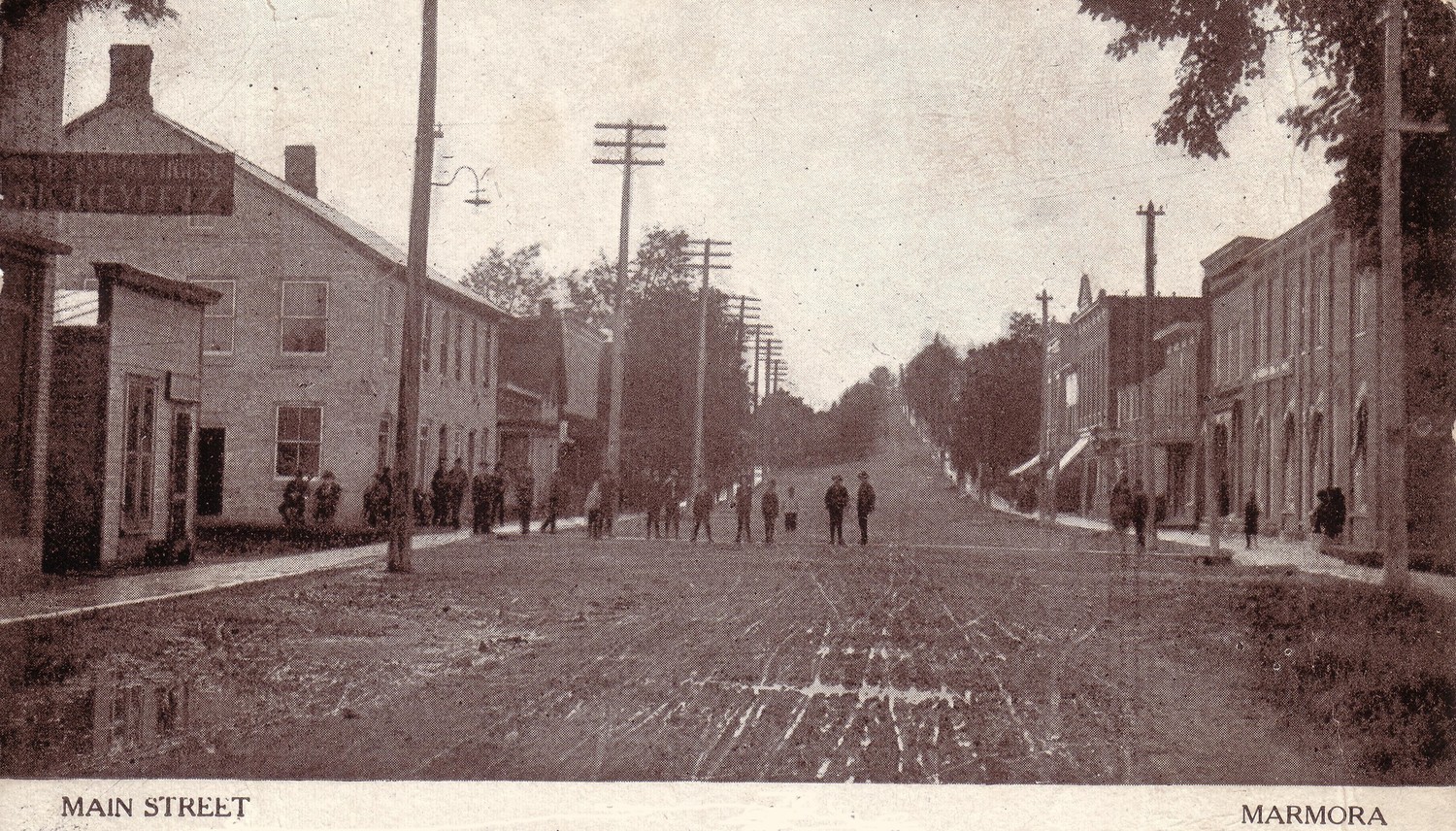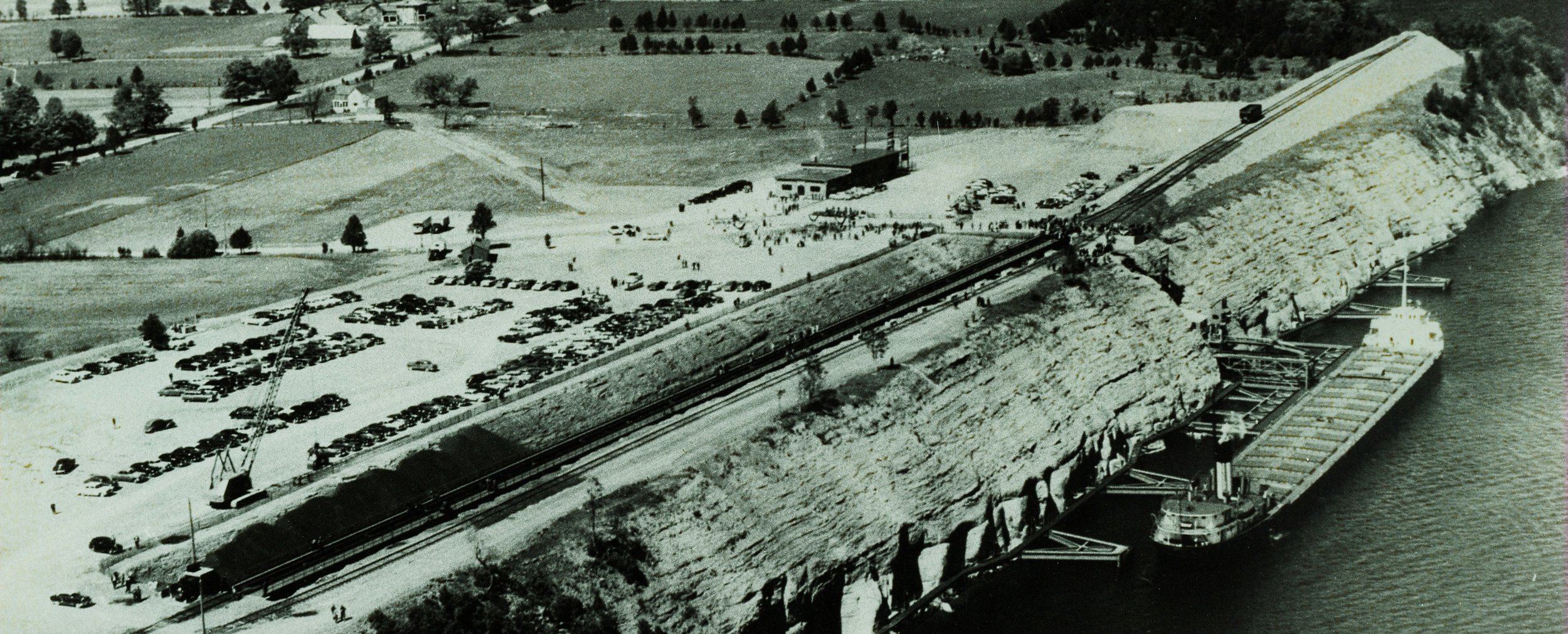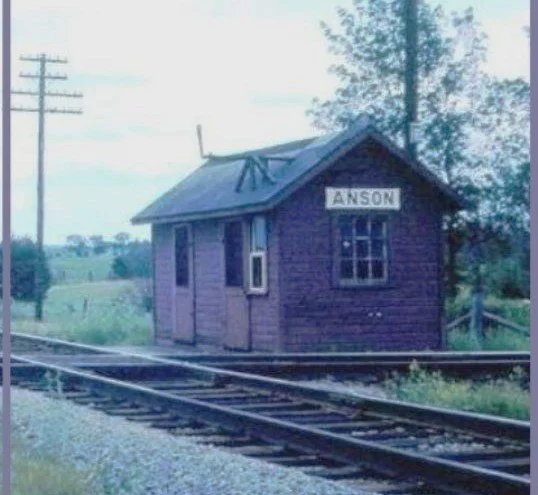Check your old photographs. They may have been made in Marmora.
/In 1826/27, using a camera obscura fitted with a pewter plate, Niépce produced the world'sfirst successful photograph from nature, a view of the courtyard of his country estate, Gras, from an upper window of the house. The exposure time was about eight hours, during which the sun moved from east to west so that it appears to shine on both sides of the building. For the next 60 years, photography was a matter of experimentation, looking for the sharpest long lasting image. By 1837 Daguerre was able to fix the image permanently by using a solution of table salt to dissolve unexposed silver iodide. That year he produced a photograph of his studio on a silvered copper plate, a photograph that was remarkable for its fidelity and detail.
Next was the ever popular tintype, which, by-the-way, contains no tin but is a blackened iron sheet. However it lost in popularity to the higher quality and lower costs of albumen prints on paper. It employed a glass negative allowing the consumer to buy several copies of the same image.. But it was not until the mid 1880's that photographic paper and camera equipment vastly improved and the public was offered the very popular "cabinet card" - the photo on paper (about 4 x 6) and mounted on black, maroon or green board, with borders, trim and scalloped edges..
Marmora has had two commercial photographers that we know of. Some time in the 1880's, Mr. Galaugher (whose name we think was Alex), was selling photographs, marked with his stamp on the back. He was the photographer that took the well known photo of the first train coming from the north into the Marmora Station in 1884. His stamp reveals that his studio was located "Opposite the post office", which at that time was at 3 McGill Street. That puts his studio just north of Madoc St. on the east side.
Accompanying that photo was a collection of photos of the iron mine in Coe Hill, which had recently opened in 1884. These photo were mounted in the same manner as the train photo and were most likely Galaugher photos. Click here to see the collection
The second photographer was Thomas Stewart, whose studio was located where the library is now. An excerpt from a 1914 Belleville Intelligencer described it as follows:
Farm in Vansickle, photographed by Thomas Stewart
"A well known and popular studio in Marmora which embraces all the modern improvements is the one conducted by Mr. T. Stewart. The studio located on Forsyth St. is nicely arranged and possesses all the modern conveniences. He is an experienced and practical artist who gives his personal attention to every department of the business and allows no work to leave his establishment that does not come up to the highest standard of excellence. Notwithstanding the high quality of these pictures the prices are moderate and promptness In the fulfillment of all orders Is a distinguishing feature of the business. All kinds of portrait enlarging and large groups given careful attention. Finishing for amateurs promptly attended to. Mr. Stewart established himself in business in Marmora fourteen years ago."
Family history of Thomas Stewart:
Thomas Stewart born 28 December 1873,at Trenton, died 1955. He married Florence Eliza Booth (1870 - approx.1911) on the 24th of March, 1897. They had two children, Roy Graeme, born 1 June, 1903 and Flossie (Florence) Elizabeth, born 1905 at Marmora, died in 1993.
Thomas was married a second time on Sept. 5, 1916, to Margaret Jane Caskey (1882 –1935) The 1921 census shows a 10 month old daughter, Jane Margaret. At some point they moved to Belmont Township and tried farming.
Thomas and Margaret are buried at Havelock at Pine Grove Cemetery
THOMAS STEWART PHOTOS








































